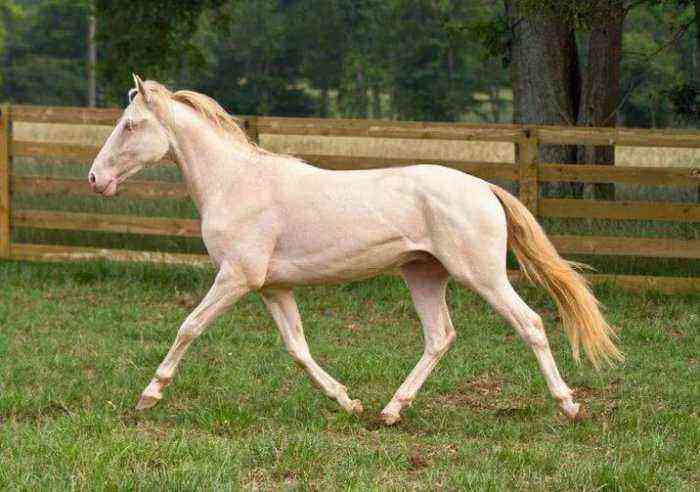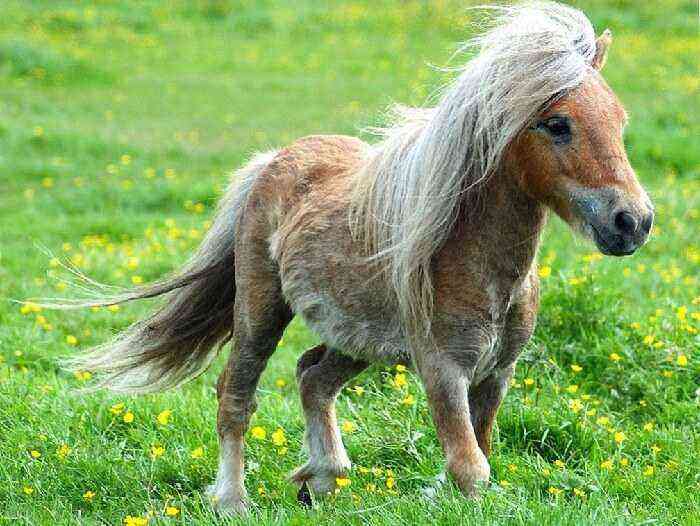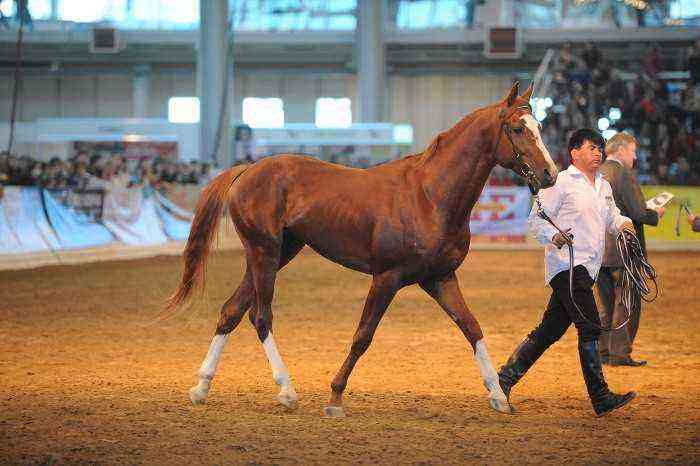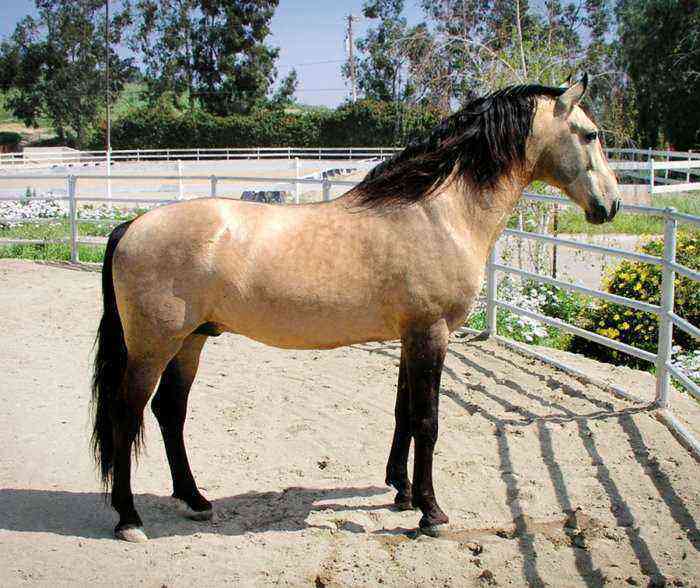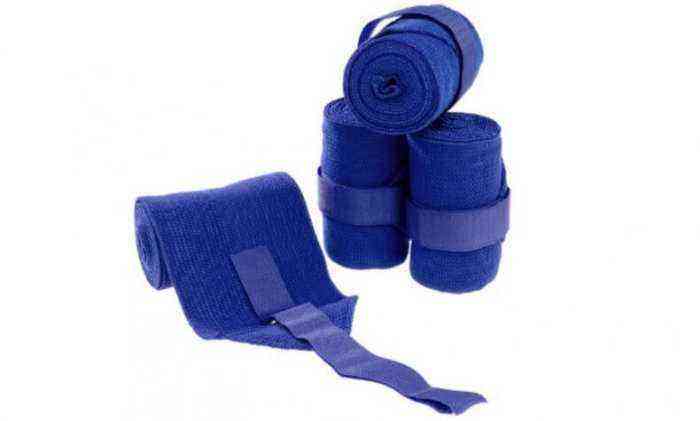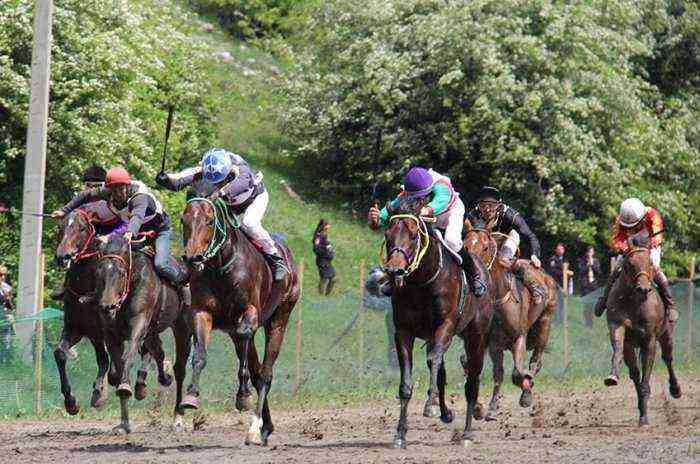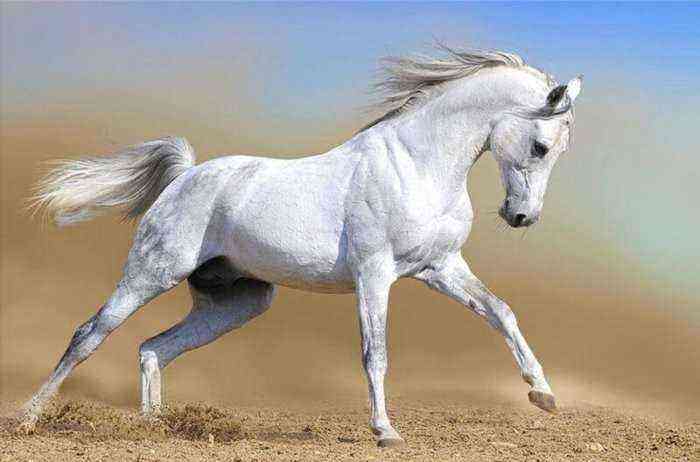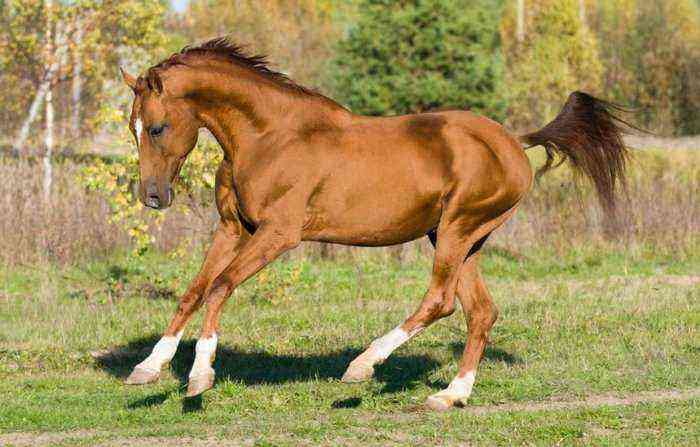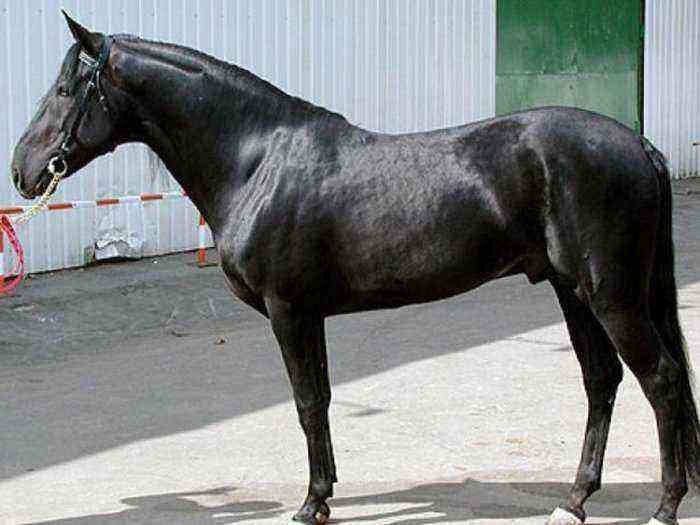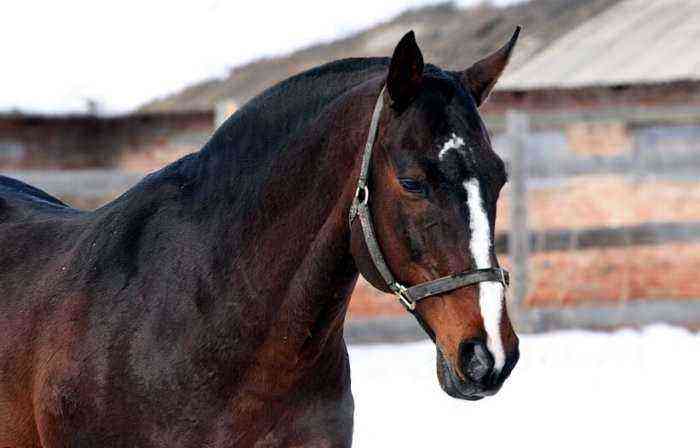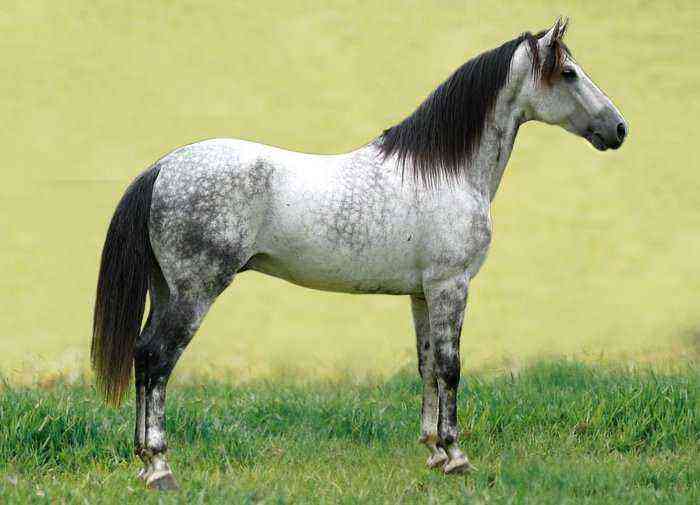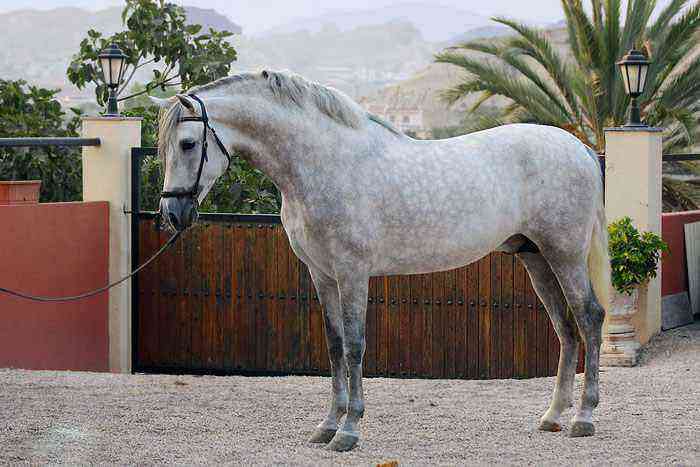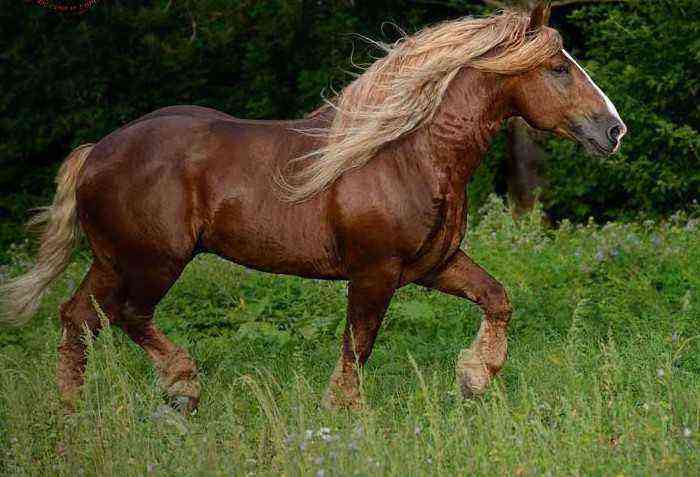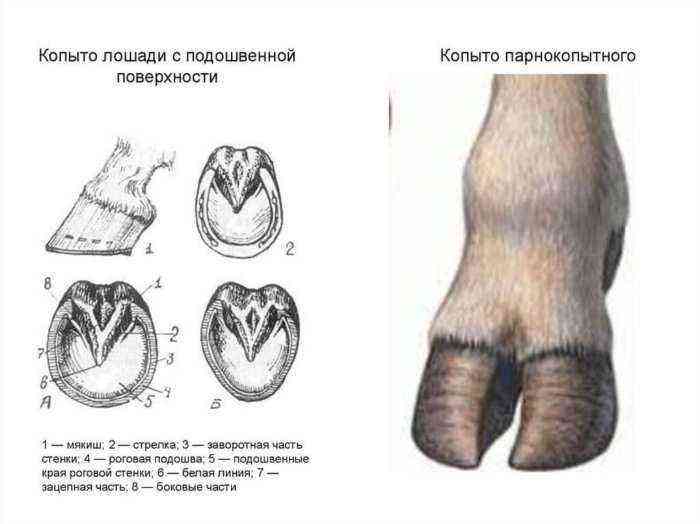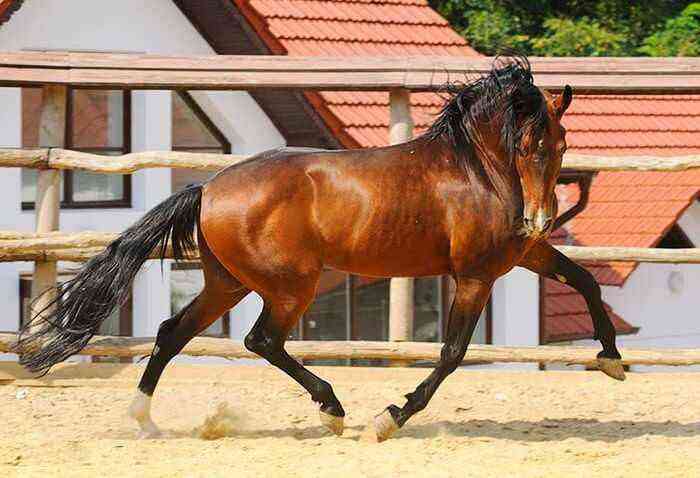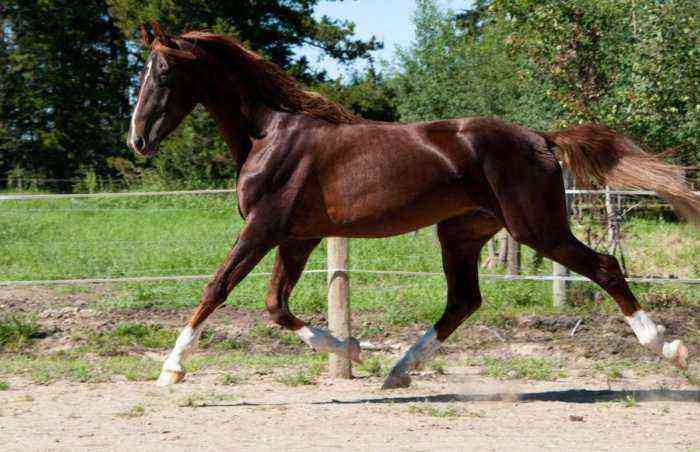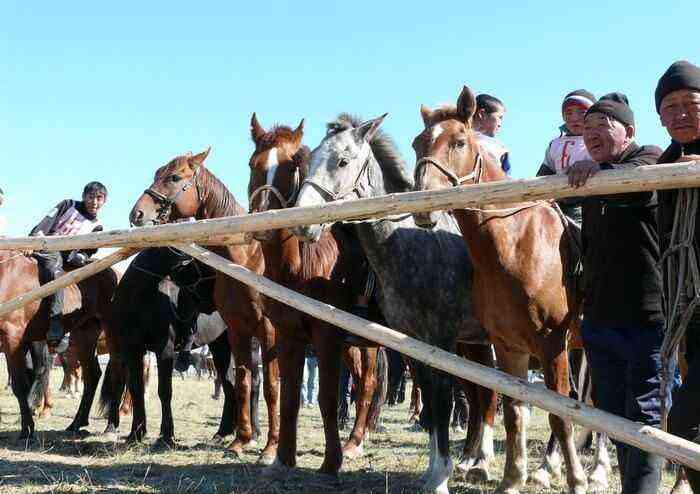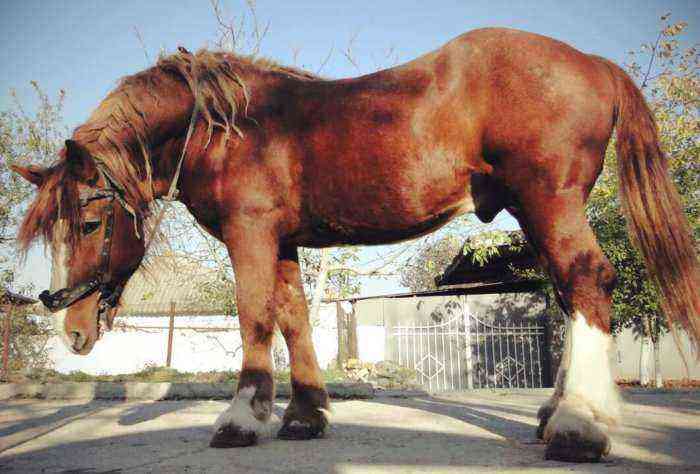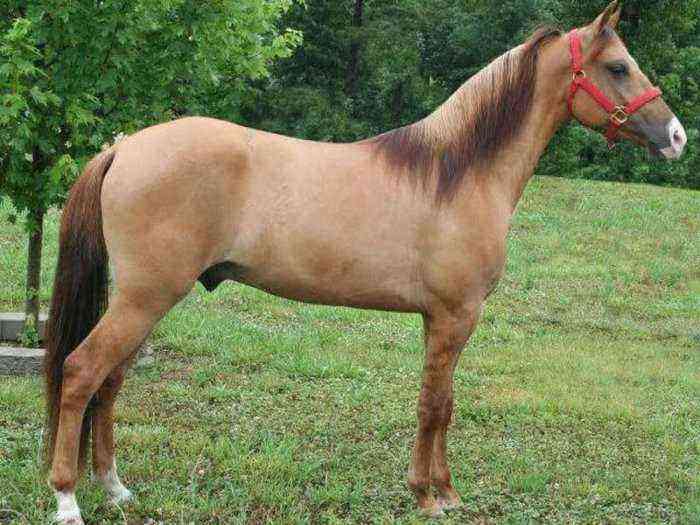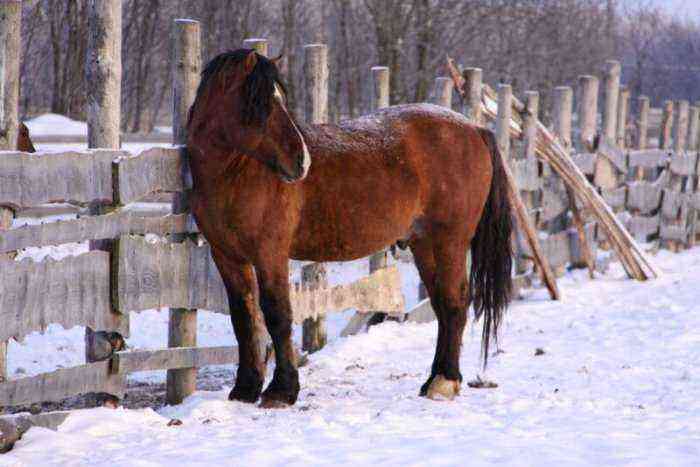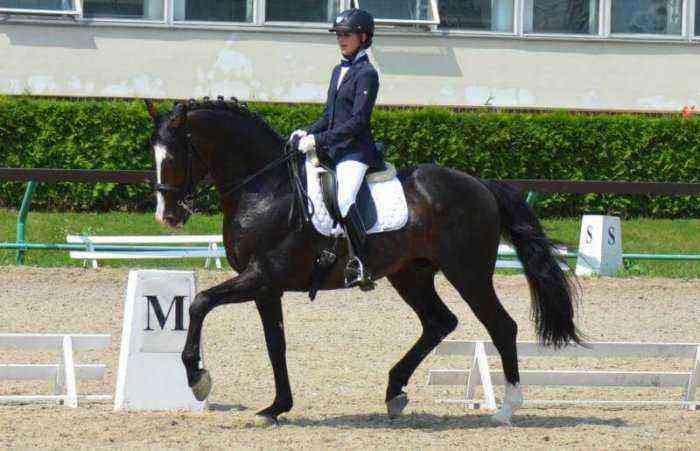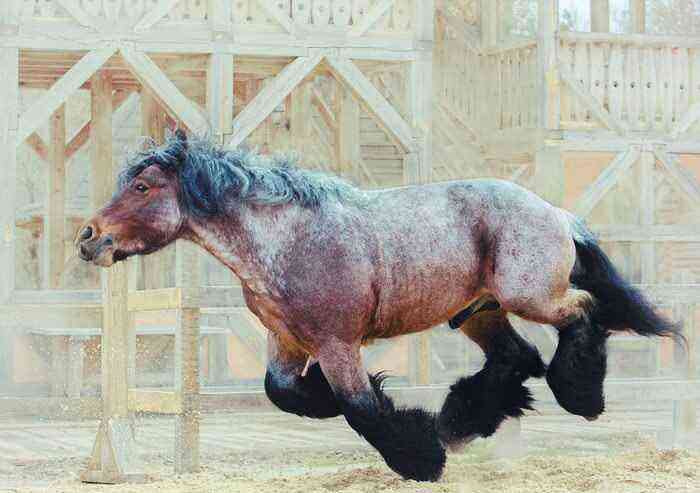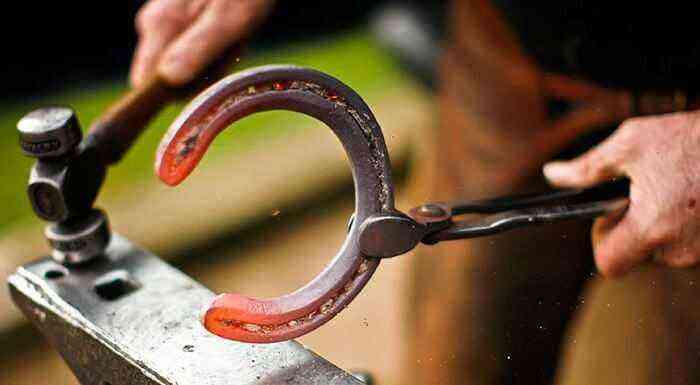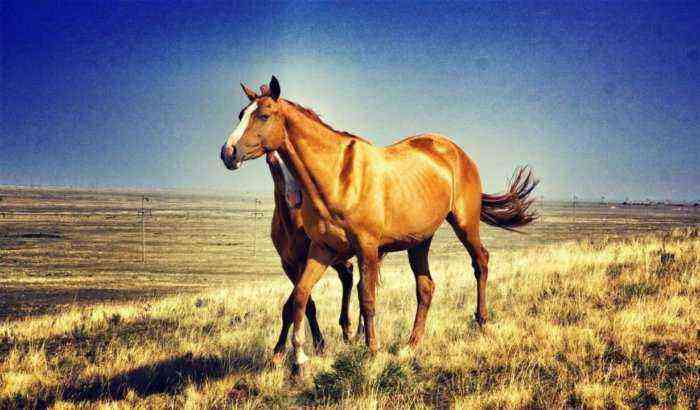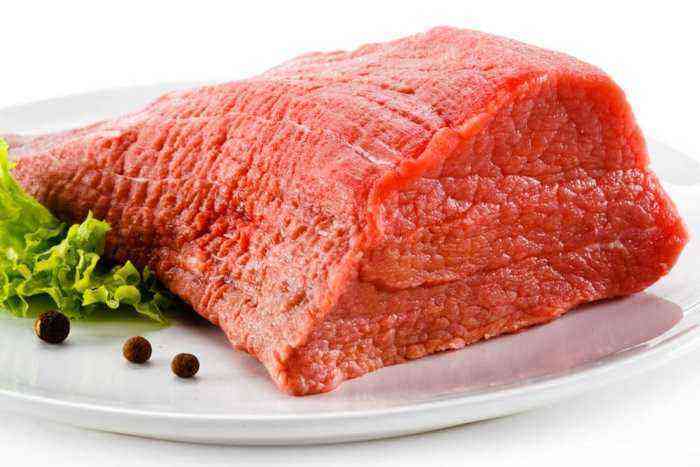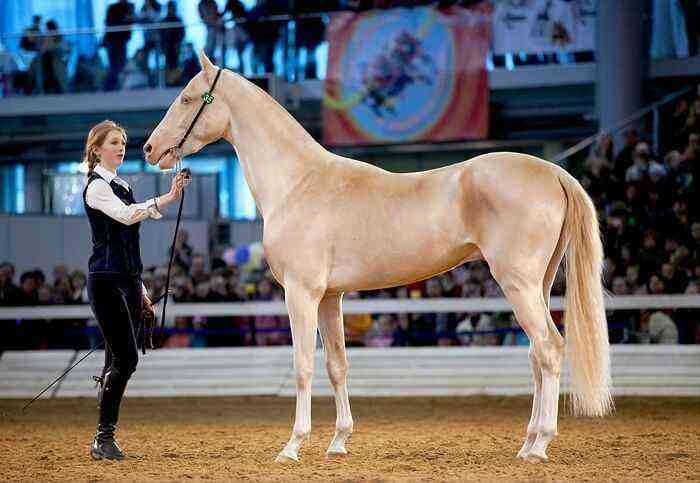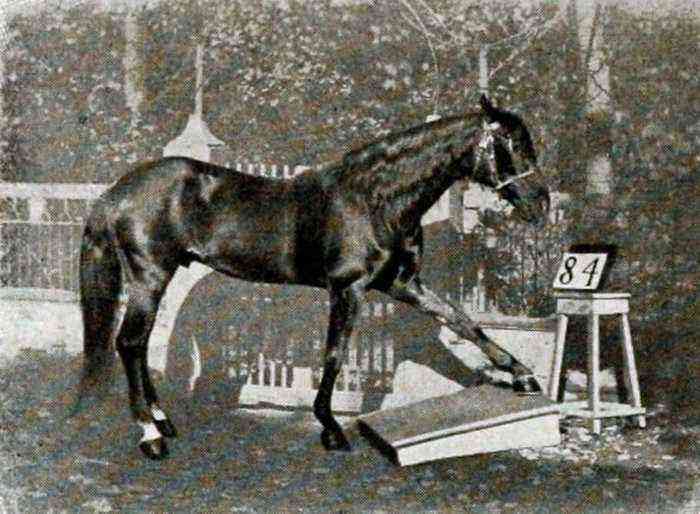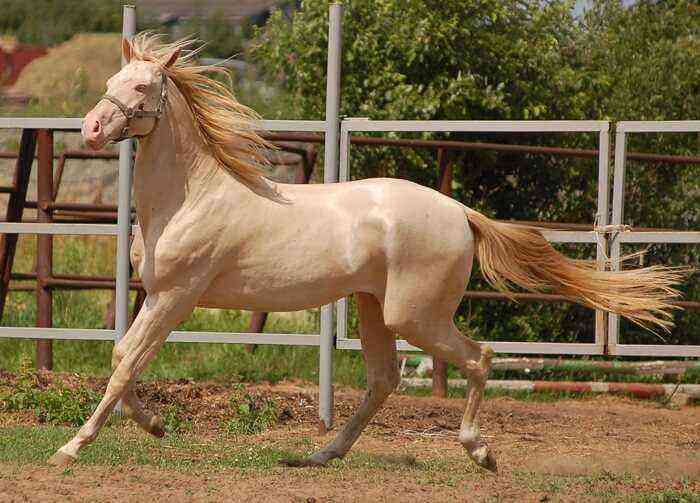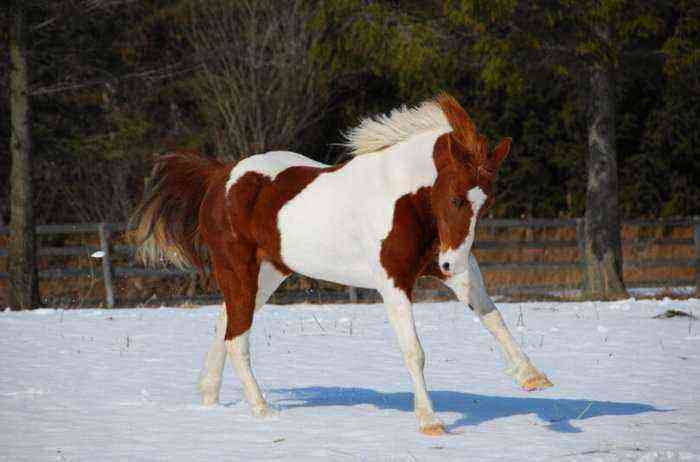The accidental illness of horses remained unexplored for a long time. Scientists could not explain the nature of its origin. Later it turned out that the causative agent of the disease is a single-celled parasite called trypanosoma. It causes a disease in horses, mules and donkeys, which is characterized by the development of an inflammatory process in the genitals of animals and damage to the nervous system. In horses, this disease often occurs in a chronic form.
Trypanosoma eguiperdum
Causes
Up until 1894, the true cause of douria was unknown. There were assumptions about its origin, but they were incorrect. It was believed that the disease develops due to:
- excessive fatness of animals;
- a large number of cases;
- poor nutrition;
- sedentary lifestyle;
- supercooling.
At the end of the 19th century, the causative agent of horse dourine, Trypanosoma eguiperdum, was identified. Now it became clear that it is transmitted from one animal to another during mating, hence its name, accidental.
Causative agent
The unicellular parasite Trypanosoma eguiperdum is the causative agent of dourine in horses. Donkeys and mules are also sensitive to it. In the body of other animals, this type of trypanosome does not parasitize.
Like other trypanosome species, eguiperdum reproduces by longitudinal fission. Interestingly, this parasite has protection against the immune system of the victim. If the pathogen was detected by the animal’s immune system, it begins to produce a special type of protein that allows it to “disguise itself”. That is, another glycoprotein is formed on the surface of trypanosome cell membranes, which defense cells cannot quickly recognize.
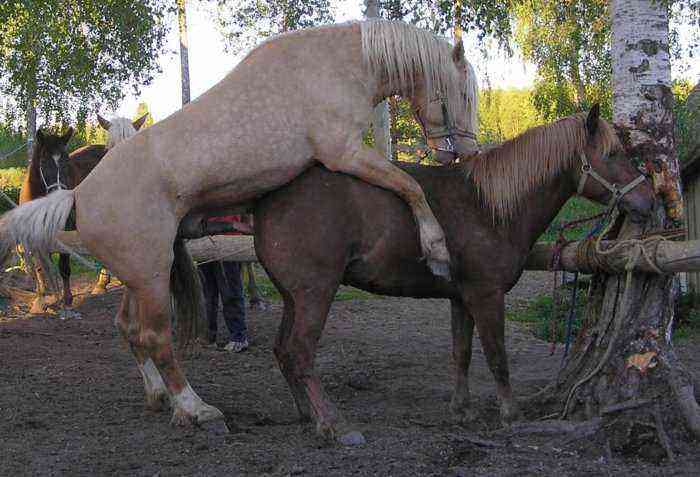
mating horses
Trypanosoma enters the horse’s body most often through sexual contact. Less commonly, this happens with artificial insemination of mares, when infected stallion sperm is used or the horses are treated with one napkin. After infection, the parasites begin to multiply on the mucous membrane of the genital organs of the animal, thereby causing an inflammatory process.
Then the microorganisms enter the blood. In the process of life, they release toxic substances that adversely affect the nervous system. As a result, a sick horse also has other unpleasant symptoms, such as skin rashes, metabolic disorders, paralysis of limbs or other parts of the body.
Symptoms of the disease
After infection with trypanosomes, the incubation period lasts 3-4 weeks. For accidental illness, the passage of three stages of development is characteristic. We will consider them separately, since each stage is characterized by different clinical manifestations. Stages of development of dourine:
- Edema period. Its duration is 30-40 days.
- Stage of skin manifestations.
- Paralysis stage.
Edema period
This is the initial stage of the disease, which is characterized by damage to the genital organs, the development of the inflammatory process. At this stage, the symptoms of the disease are as follows:
- swelling on the udder, eyelids, lips and external genitalia in mares;
- in stallions infected with trypanosomes, the penis, scrotum, and prepuce swell;
- ulcerations appear on the mucous membrane of the genital organs, after the disappearance of which light spots remain;
- in mares, mucus is secreted from the vulva.

sick horses
When examining the horse’s vagina with the help of gynecological instruments, hyperemia of the mucous membrane and multiple erosions on it are detected.
Attention! At the stage of edema, the general condition of the animal remains satisfactory, sometimes an increase in body temperature is recorded, which then normalizes.
Stage of skin manifestations
At this stage, new ones join the already existing symptoms of the disease. Due to the toxins that trypanosomes secrete, the nervous system of the animal suffers. In this regard, the clinical picture of the disease is changing. Consider the symptoms characteristic of the second stage of doural sickness:
- Rash on the body like urticaria. It has the ability to appear and disappear.
- Itching itch.
- Hypersensitivity of certain areas of the skin. You can see how the animal cleans itself in these places.
- The appearance of so-called thaler plaques on the body. They have the shape of an oval or circle and can be of various sizes (4-20 cm). Most often, swelling of the skin in the form of a ring occurs in Thoroughbred horses.
- Exhaustion. The horse loses weight, despite the fact that the appetite is maintained.
- Pregnant mares at this stage of the disease have abortions.
Period of paralysis
This stage of douria is the final one. The nervous system of the sick horse is already severely damaged, and now it becomes obvious. Some of the nerves responsible for muscle movement stop functioning. The symptoms of the paralysis stage vary, depending on which nerves have been affected.
For example, weakening of the muscles of the croup and lameness is observed if the nerves of the sacral region are damaged in the horse. When the facial nerve processes are affected, the animal’s eyelid may close, the lip or ear may droop.

Lameness in a horse
The accidental disease continues to progress. Soon, the emaciated horse hardly rises to its feet. She gets bedsores. Death occurs due to complete paralysis. The immobilized animal can no longer eat or drink and soon dies.
Attention! Some animals do not have certain signs of douria, characteristic of one of the stages of its development.
Therapies
Horses infected with dourine, as well as those who have had sexual contact with them, but so far do not show signs of illness, are treated with Naganin. It is trypanosomicidal. It has a number of contraindications, such as:
- heart diseases;
- liver;
- the kidneys.
Before starting therapy, the farmer needs to know the exact weight of each sick individual in order to correctly calculate the dosage of the drug. Naganin causes a number of side effects, so you can not allow the dose to be exceeded. It cannot be reduced either, otherwise the therapeutic effect will not be achieved, and trypanosomes will develop resistance to the active substance.
Side effects that may occur during treatment with Naganin:
- swelling of the genital organs;
- cracks in the anus;
- increased heart rate;
- increased blood pressure;
- oppression;
- soreness of the hooves.
The treatment regimen and the exact dosage of the drug will be announced by the veterinarian, taking into account the degree of damage to the animal’s body and other factors. Below is general information about the treatment of horses for dourine with Naganin.
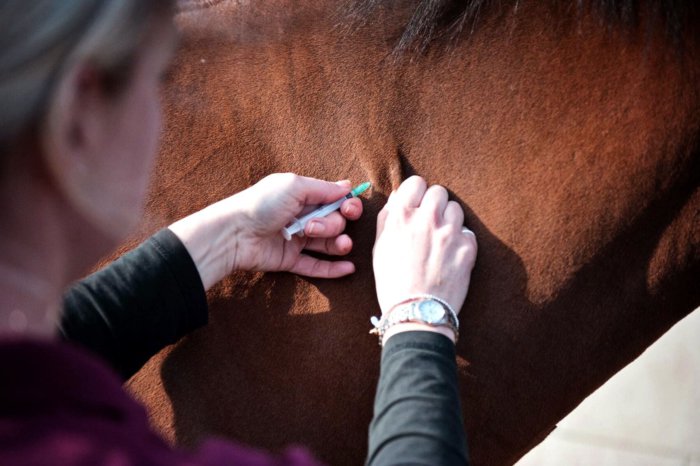
The introduction of the drug
The drug for horse dourine is diluted with saline so as to obtain a solution for injection at a concentration of 10%. It is injected into the vein of the animal at a dosage of 0,01-0,015 mg/kg of horse weight. A second injection is made 30-45 days after the first.
Attention! It is possible to reduce the risk of side effects after the administration of Naganin by increasing the physical activity of the animal. Two days before the start of therapy and after the administration of the drug for 10 days, short walks in an easy run 2 or 3 times a day are organized for the horse.
A double dose of the drug is usually sufficient. Further, the horse remains under observation throughout the year. At 10, 11 and 12 months, swabs are taken from her for examination. If trypanosomes are not found in them, then the animal is considered healthy. Otherwise, combination therapy will be used, when, along with Naganin, another drug is used – Novarsenol or Surmin.
The treatment regimen for these drugs is different. The drugs are administered three times at a certain time:
- on the 1st, 10th and 16th days of treatment, intravenous injections are made with Naganin at a dosage of 0,01-0,015 mg / kg;
- on the 4th, 7th and 13th day of treatment, Novarsenol is administered at a dosage of 0,005/kg of body weight.
Naganin is often used in combination with Fuadin. In this case, both drugs are administered simultaneously. To do this, take 0,1 ml of Fuadin for each kilogram of animal weight, dilute it with saline 1: 1, add the recommended dose of Naganin (0,01 / kg of weight). Injections are administered into a vein three times – on the 1st, 4th and 7th day.
Attention! In addition to drugs for trypanosomes, it is recommended to use symptomatic agents during the treatment of horses for douration, including herbal preparations, for example, Trianol.
Prevention
For the prevention of dourine, the following instructions must be strictly observed:
- purchase animals only from trusted suppliers and points free from this disease;
- mares and stallions should not be allowed to mate unless they have been checked for mating;
- newly arrived horses and mares should be isolated for a period of 30 days and biomaterial for research should be taken from them – swabs and blood;
- in artificial insemination stations, personnel must use sterile instruments and wear gloves before handling animals;
- veterinary examination of the reproductive organs of mares is carried out in disposable gloves;
- each stallion is provided with a personal artificial vagina for semen collection.
When there was no reliable information about the nature of the mating disease of horses, it was not possible to protect the livestock from it; during mating, the horses infected each other. Now the causes of the disease are known – it is caused by unicellular parasites trypanosomes. They are very insidious, as they are able not only to hide from the immune system, but also to develop resistance to drugs. That is why it is important to pay attention to the prevention of this disease.
